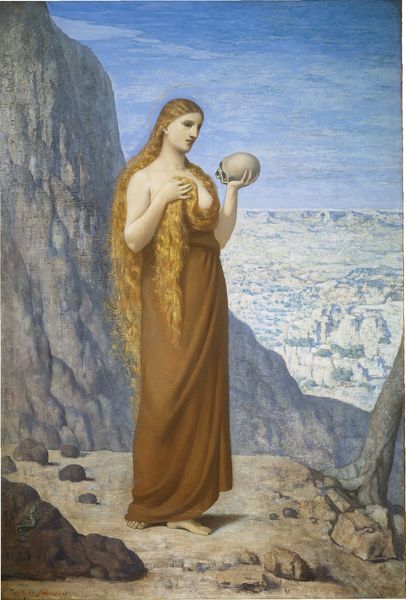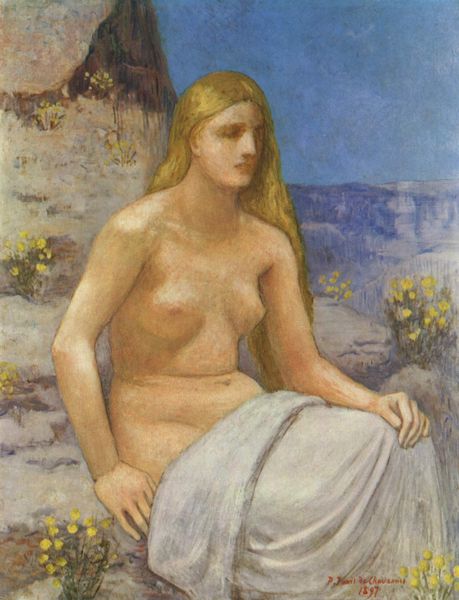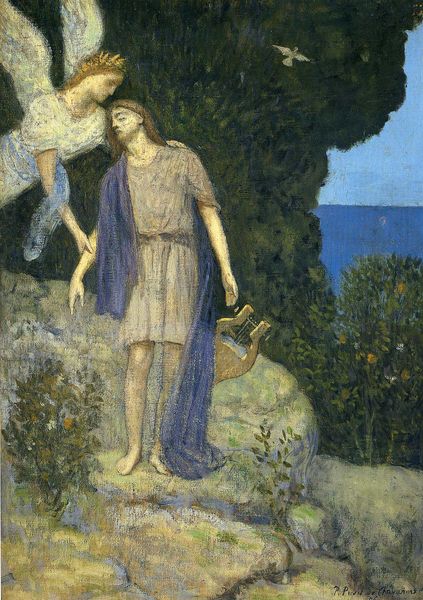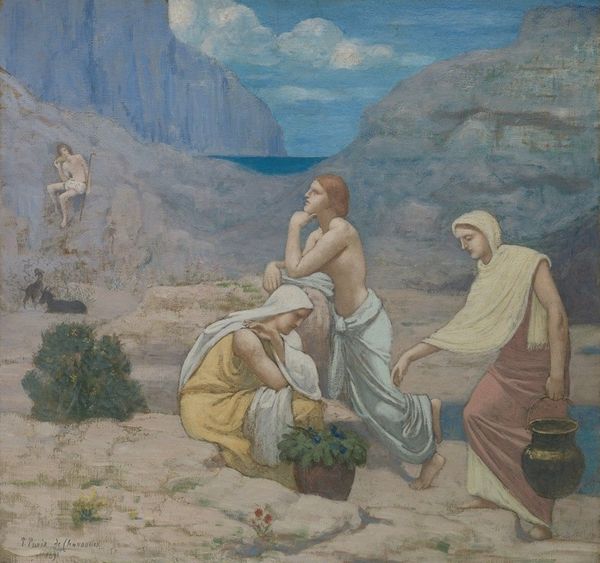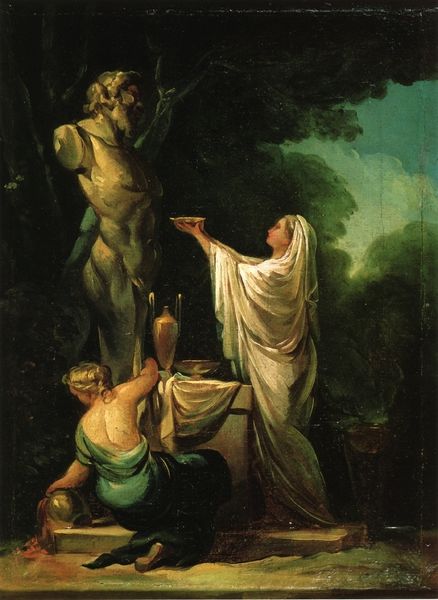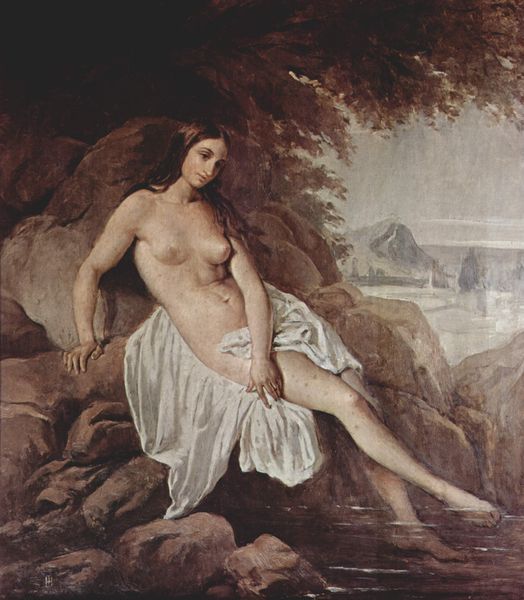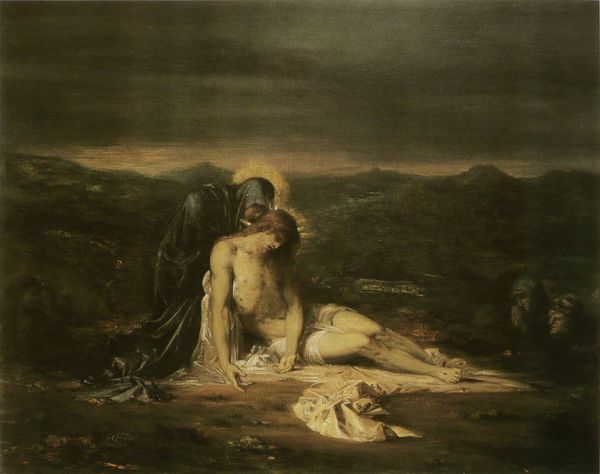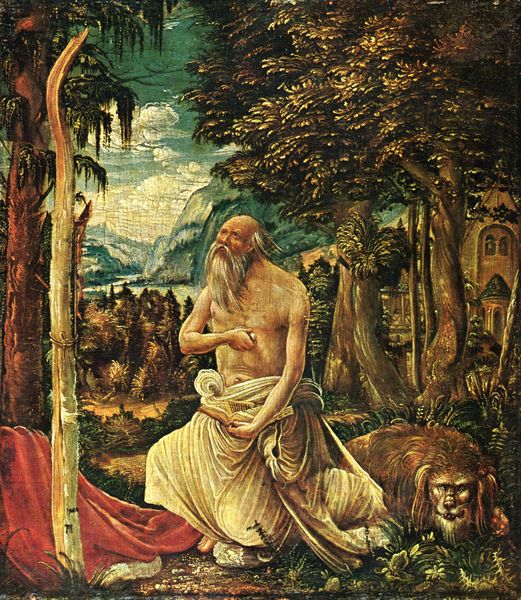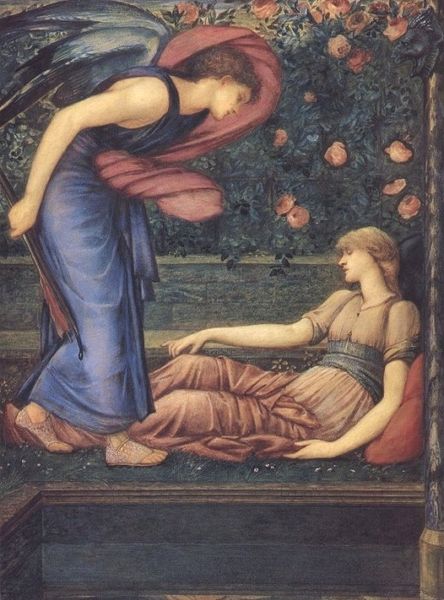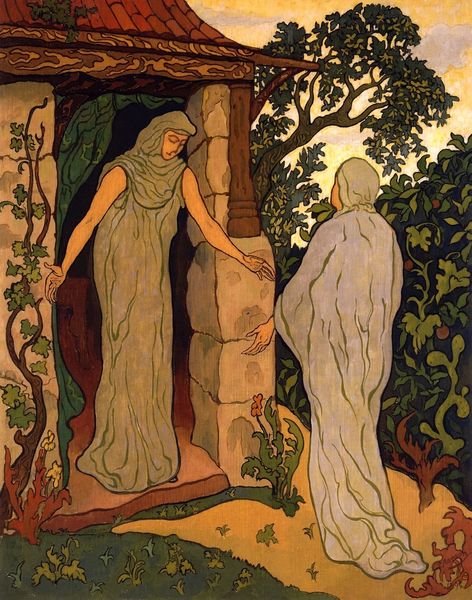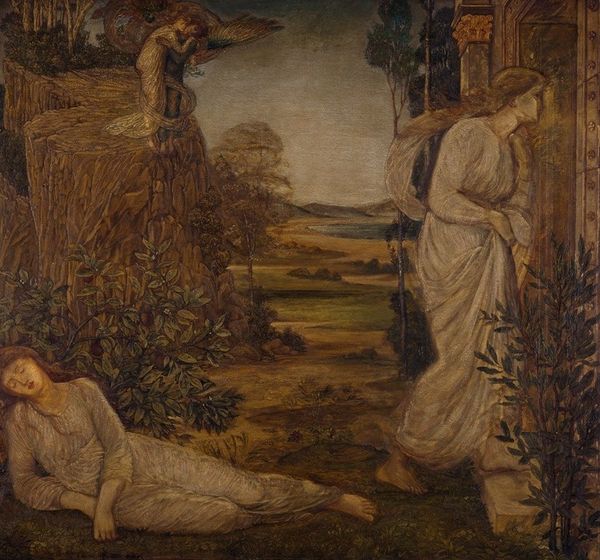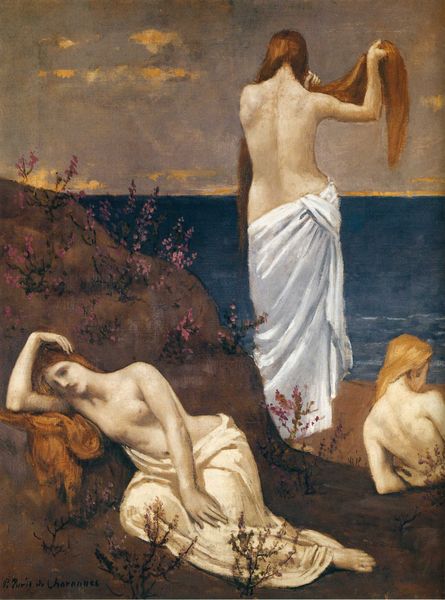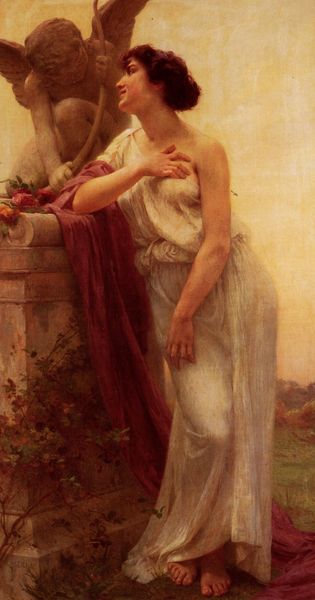
Dimensions: 48 x 36.8 cm
Copyright: Public domain
Pierre Puvis de Chavannes painted this oil on canvas, titled 'Mary Magdalene in the Desert', sometime in the late nineteenth century. Here, the Magdalene occupies a barren landscape, clutching a skull, a popular symbol of mortality in European art. Made in France during the height of its colonial expansion, the painting reveals certain cultural assumptions. The figure’s nudity, for example, may allude to the idea of the ‘primitive’ or ‘untamed’ woman. It is easy to read this Magdalene as a symbol of the civilizing potential of the church, an idea that would have sat comfortably with dominant ideologies of the time. What’s interesting here is the way de Chavannes flattens the composition, and renders the figure so still. While religious painting had long been supported by institutions in France, by the late nineteenth century, some artists were beginning to question the established visual codes. To understand the painting, we need to look at the visual culture of its time, including the complex relationship between church and state.
Comments
No comments
Be the first to comment and join the conversation on the ultimate creative platform.
